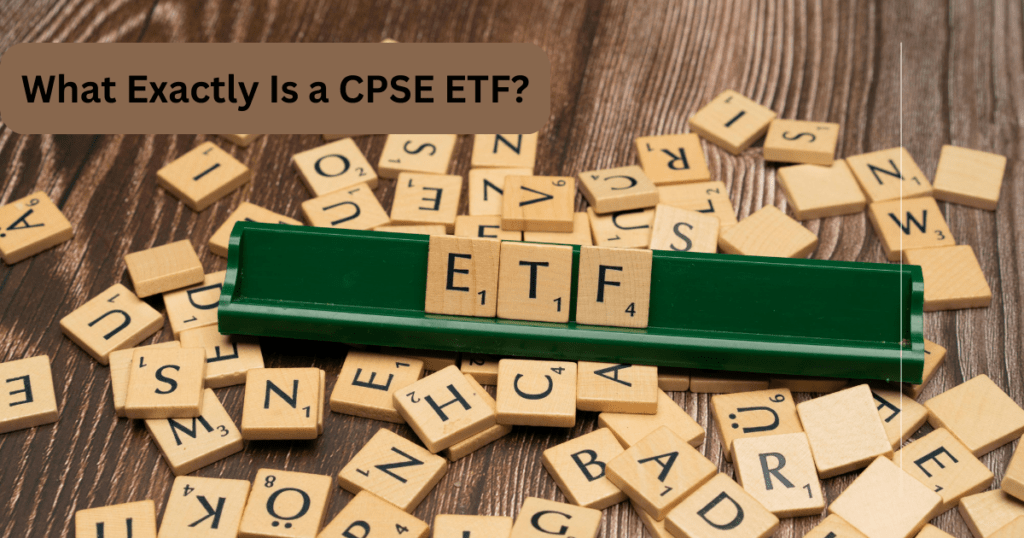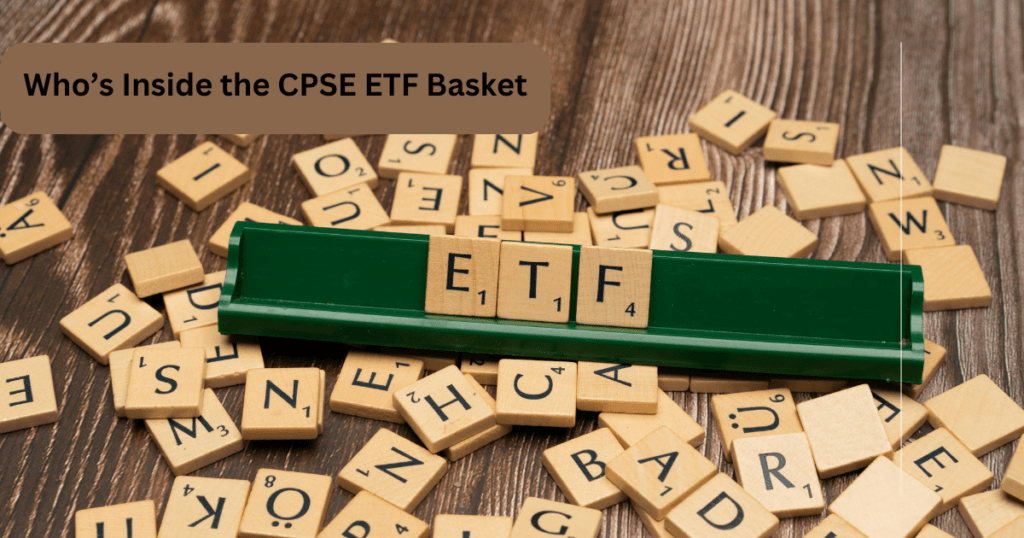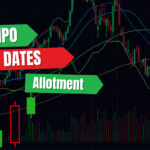Hey there! Have you ever wondered how you could invest your hard-earned money in something safe, reliable, and tied to India’s biggest government companies? If yes, then buckle up because today we’re diving into the exciting world of CPSE ETF—an investment option that’s been making waves in India’s financial scene. Don’t worry if you’re new to this; I’ll break it down in the simplest way possible, like we’re chatting over a cup of chai. By the end of this article, you’ll know what a CPSE ETF is, why it matters, how it works, and whether it’s the right fit for you. Let’s get started!
What Exactly Is a CPSE ETF?
Imagine you’re at a buffet with a plate in hand, and instead of picking just one dish, you get a little bit of everything—some dal, some rice, a bit of curry, and even a sweet treat. That’s kind of what a CPSE ETF does for your money. The full name is Central Public Sector Enterprises Exchange Traded Fund, but let’s stick with CPSE ETF because it’s shorter and snappier.

In simple terms, a CPSE ETF is a type of investment fund that bundles together stocks of big, government-owned companies in India—like ONGC, NTPC, or Coal India—and lets you buy a small piece of all of them at once. Instead of picking one company to invest in, you’re spreading your money across several solid players, all managed by the Government of India. Cool, right?
The best part? It’s traded on stock exchanges like the BSE or NSE, just like shares of a single company. So, you can buy or sell your CPSE ETF units anytime the market is open. It’s like owning a mini treasure chest of India’s top public sector companies, all in one go!
MUST READ: what is GMP
How Did the CPSE ETF Come to Be?
Let’s take a quick trip down memory lane. Back in 2014, the Indian government was looking for smart ways to raise money without selling off its prized companies completely. At the same time, they wanted everyday people like you and me to get a chance to own a slice of these giants. That’s when the idea of the CPSE ETF was born.
The first CPSE ETF was launched in March 2014 by the government in partnership with asset management companies (AMCs) like Nippon India Mutual Fund. It was a win-win: the government got cash by selling small stakes, and investors got a low-cost way to invest in trusted public sector firms. Since then, the CPSE ETF has grown in popularity, with new versions (called tranches) being rolled out over the years, each tweaking the mix of companies to keep things fresh and exciting.
Why Should You Care About CPSE ETF?
Okay, so why all the buzz about CPSE ETF? Well, it’s not just another boring financial term—it’s got some real perks that make it stand out. Here’s why people are talking about it:
-
- Safety Meets Growth: These are government-backed companies, so they’re generally stable. Think of them as the dependable friend who’s always there when you need them. Plus, they often pay dividends, which means extra cash in your pocket.
-
- Low Cost, Big Value: Buying a CPSE ETF is cheaper than picking individual stocks. You get exposure to multiple companies without burning a hole in your wallet.
-
- Diversification Made Easy: Instead of stressing over which stock to buy, the CPSE ETF spreads your money across different sectors like oil, power, and mining. If one company has a bad day, the others might balance it out.
-
- Government’s Special Touch: Sometimes, the government offers discounts or bonuses when you buy CPSE ETF units during its initial offers. Who doesn’t love a good deal?
Sounds tempting, doesn’t it? But let’s dig deeper into how this whole thing works so you can see the magic behind the CPSE ETF.
How Does a CPSE ETF Work?
Picture this: you’ve got ₹1,000 to invest. You could buy shares of one company, say NTPC, and hope it does well. Or, you could put that money into a CPSE ETF and own tiny bits of NTPC, ONGC, BEL, and more—all at once. Here’s how it happens step-by-step:
-
- The Basket: The CPSE ETF is like a basket filled with stocks of Central Public Sector Enterprises (CPSEs). The companies in this basket are picked based on strict rules, like their market size and performance.
-
- Units You Can Buy: When you invest in a CPSE ETF, you’re buying “units” of this basket. Each unit represents a small share of all the companies inside.
-
- Trading on the Market: These units are listed on stock exchanges. You can buy or sell them through a demat account, just like you’d trade regular stocks.
-
- Price Movement: The value of your CPSE ETF units goes up or down based on how the companies in the basket perform. If oil prices rise and ONGC does well, your CPSE ETF might smile too!
-
- Managed by Experts: An asset management company (like Nippon) takes care of the CPSE ETF, making sure the mix of companies stays balanced and follows the rules.
It’s like hiring a chef to cook you a delicious meal—you don’t need to chop the veggies or stir the pot; you just enjoy the result!
MUST READ: Best Investment Options in India with High Returns
Who’s Inside the CPSE ETF Basket?
Now, you might be wondering: which companies are part of this CPSE ETF magic? The lineup can change a bit with each new version (or tranche), but typically, you’ll find some of India’s heavyweight public sector names. Here’s a peek at the usual suspects:

-
- ONGC (Oil and Natural Gas Corporation): The big boss of oil and gas exploration.
-
- NTPC (National Thermal Power Corporation): Powers up India with electricity.
-
- Coal India: Keeps the country running with coal production.
-
- BEL (Bharat Electronics Limited): Makes cool tech for defense and more.
-
- Power Grid Corporation: Ensures electricity reaches every corner of India.
These are just a few examples. The exact mix depends on the CPSE ETF version you’re looking at, but they’re all big players owned by the government. That’s why the CPSE ETF feels like a safe bet—it’s tied to companies that are part of India’s backbone.
MUST READ: Decoding Your Credit Card Statement
The Benefits of Investing in CPSE ETF
Let’s talk about the goodies you get when you jump into the CPSE ETF pool. It’s not just about owning stocks; it’s about smart money moves. Here’s what’s in it for you:
-
- Affordable Entry: You don’t need lakhs of rupees to start. Even a small amount can get you into the CPSE ETF game.
-
- Dividends Galore: Many CPSEs are known for paying regular dividends. When they profit, you get a share of the pie.
-
- Less Risky Vibes: Because it’s a mix of companies, the CPSE ETF isn’t as shaky as betting on just one stock. It’s like having a safety net.
-
- Government Backing: These aren’t fly-by-night firms. The government’s stake in them adds a layer of trust.
-
- Long-Term Growth: CPSEs are tied to India’s growth story—think energy, infrastructure, and defense. As the country grows, so could your CPSE ETF.
I know what you’re thinking: “This sounds great, but is there a catch?” Fair question! Let’s look at both sides of the coin.
The Flip Side: Risks of CPSE ETF
No investment is perfect, and the CPSE ETF has its quirks too. Here’s what to watch out for:

-
- Market Ups and Downs: Even though it’s diversified, the CPSE ETF can still dip if the stock market takes a hit.
-
- Sector Dependence: Many CPSEs are in energy or heavy industries. If oil prices crash or power demand drops, your CPSE ETF might feel the pinch.
-
- Government Decisions: Policies or changes in management can affect how these companies perform, which trickles down to your CPSE ETF.
-
- Not a Quick Buck: This isn’t a “get rich overnight” scheme. The CPSE ETF is more of a slow-and-steady wins-the-race kind of deal.
So, it’s not all rainbows and butterflies, but if you’re in it for the long haul, the CPSE ETF could still be a gem.
How to Start Investing in CPSE ETF
Ready to give the CPSE ETF a shot? It’s easier than you think! Here’s your beginner’s roadmap:
-
- Get a Demat Account: You’ll need one to buy and hold CPSE ETF units. It’s like a digital wallet for your investments.
-
- Pick a Broker: Choose a stockbroker or app (like Zerodha, Groww, or Upstox) to place your orders.
-
- Find the CPSE ETF: Search for it on the BSE or NSE. It’s usually listed under a name like “Nippon India CPSE ETF.”
-
- Buy During an Offer or Market: The government sometimes launches new CPSE ETF tranches with discounts—keep an eye out! Otherwise, buy it anytime on the exchange.
-
- Hold or Sell: Decide if you’re in it for the long term or want to cash out when the price is right.
It’s like ordering food online—pick what you want, pay, and enjoy. Only here, you’re feeding your financial future!
CPSE ETF vs. Other Investments: How Does It Stack Up?
You might be wondering how the CPSE ETF compares to other options like mutual funds, stocks, or fixed deposits. Let’s break it down:
-
- Vs. Individual Stocks: With stocks, you pick one company and take all the risk. The this ETF spreads that risk across many.
-
- Vs. Mutual Funds: Mutual funds can include private companies too, while the this ETF sticks to government firms. Plus, ETFs often have lower fees.
-
- Vs. Fixed Deposits: FDs are super safe but give low returns. The this ETF has more risk but also more growth potential.
Think of the this ETF as the middle child—balancing safety and reward in a way that’s not too wild but not too dull either.
Real-Life Success Stories with CPSE ETF
Let’s make this real. Imagine Priya, a 30-year-old teacher from Mumbai. In 2017, she heard about the CPSE ETF and invested ₹10,000 during a new fund offer. Over the years, her investment grew as CPSEs like NTPC and Power Grid rode India’s infrastructure boom. By 2025, her this ETF was worth ₹18,000—not a fortune, but a solid return for a low-effort investment.
Or take Raj, a small business owner from Delhi. He likes the this ETF because it pays dividends. Last year, he got ₹500 extra from his units, which he used to treat his family to dinner. Small wins, big smiles!
These stories show how the this ETF can work for regular folks—not just finance wizards.
Tips to Make the Most of Your CPSE ETF
Want to ace your CPSE ETF game? Here are some pro tips:

-
- Stay Updated: Watch news about CPSEs or government policies—they can move the this ETF needle.
-
- Go Long: This isn’t a sprint. Hold your this ETF for years to see the real magic.
-
- Grab Discounts: If a new this ETF tranche comes with a deal, jump on it!
-
- Mix It Up: Don’t put all your money in one place. Pair the this ETF with other investments for balance.
It’s like tending a garden—plant the seeds, water them, and watch them grow over time.
The Future of CPSE ETF in India
Where’s the CPSE ETF headed? Well, India’s economy is on the rise, and CPSEs are a big part of that story. With the government pushing for energy, defense, and infrastructure, the companies in the this ETF could shine brighter in the coming years. Plus, as more people discover this affordable investment, its popularity might soar.
But it’s not just about growth. The this ETF also ties into India’s vision of financial inclusion—giving everyday investors a chance to own a piece of the nation’s progress. How cool is that?
Is CPSE ETF Right for You?
Here’s the million-rupee question: should you invest in a CPSE ETF? It depends on you! If you’re someone who likes a mix of safety and growth, enjoys low-cost options, and believes in India’s public sector giants, then the this ETF could be your new best friend. It’s perfect for beginners, long-term planners, or anyone who wants a hassle-free way to dip their toes into the stock market.
But if you’re chasing quick profits or don’t like market ups and downs, you might want to think twice. It’s all about what fits your goals and comfort zone.
Wrapping It Up: Your CPSE ETF Adventure Awaits!
So, there you have it—the full scoop on CPSE ETF in a way that’s easy to digest and fun to explore. From its roots in 2014 to its role as a smart investment today, the this ETF is like a bridge between you and India’s biggest government companies. It’s affordable, diverse, and packed with potential—perfect for anyone looking to grow their money without too much stress.
CPSE ETF FAQs: Your Questions, Answered Simply!
Got questions about the this ETF? You’re not alone! After diving into the world of Central Public Sector Enterprises Exchange Traded Funds, it’s natural to have a few curiosities pop up. Don’t worry—I’ve got you covered with this handy FAQ section. Let’s tackle the most common questions in a way that’s easy to understand, like we’re chatting over coffee. Here we go!
1. What Is a CPSE ETF in Simple Words?
A this ETF is like a basket of stocks from big government-owned companies in India—think ONGC, NTPC, or Coal India. Instead of buying shares of just one company, you get a little piece of several at once. It’s an affordable way to invest in India’s public sector giants, and you can trade it on the stock market. Easy, right?
2. Who Can Invest in a CPSE ETF?
Anyone with a demat account can jump in! Whether you’re a newbie investor, a salaried professional, or someone looking to grow their savings, the this ETF is open to you. There’s no VIP list—just a willingness to invest in something tied to India’s trusted government companies.
3. How Do I Buy a CPSE ETF?
It’s super simple! First, open a demat account if you don’t have one. Then, use a stockbroker or app (like Zerodha or Groww) to find the this ETF on the BSE or NSE—it’s often listed as something like “Nippon India CPSE ETF.” You can buy units during a special government offer (with discounts!) or anytime on the market. Just hit “buy” and you’re in!
4. Is CPSE ETF Safe to Invest In?
The this ETF is pretty solid because it’s tied to government-backed companies. These aren’t risky startups—they’re established names like Power Grid or BEL. That said, it’s still linked to the stock market, so the value can go up or down. It’s safer than betting on one stock, but not as risk-free as a fixed deposit.
5. How Much Money Do I Need to Start?
You don’t need a fortune! The this ETF is designed to be affordable. You can start with as little as a few hundred rupees, depending on the unit price on the exchange. During new fund offers, the government sometimes sets a minimum—like ₹5,000—but it’s still pocket-friendly compared to other investments.
6. Can I Make Quick Money with CPSE ETF?
If you’re dreaming of overnight riches, the this ETF might not be your ticket. It’s more of a slow-and-steady grower. You might see gains over years, plus some dividends along the way, but it’s not built for fast cash. Patience is key here!
7. What’s the Difference Between CPSE ETF and Mutual Funds?
Great question! A mutual fund can include all kinds of companies—private or public—while the CPSE ETF sticks to government-owned firms only. Also, the this ETF trades on the stock exchange like a stock, while mutual funds don’t. Oh, and ETFs usually have lower fees—bonus!
8. Do I Get Dividends from CPSE ETF?
Yes, sometimes! Many companies in the this ETF, like NTPC or Coal India, pay dividends when they profit. When that happens, you might get a little extra cash from your units. It’s like a thank-you note from the companies you’ve invested in.
9. What Happens If One Company in the CPSE ETF Does Badly?
No stress! The this ETF is a team effort. If one company—like ONGC—has a rough patch, others like Power Grid might still do well, balancing things out. That’s the beauty of diversification—it’s not all eggs in one basket.
10. Why Does the Government Push CPSE ETF?
The government loves the this ETF because it’s a win-win. They raise money by selling small stakes in CPSEs without losing control, and everyday folks like us get to invest in these giants. It’s part of their plan to boost financial inclusion and keep the economy humming.
11. Can I Sell My CPSE ETF Anytime?
Yup! Since the this ETF trades on the stock market, you can sell your units whenever the market’s open. Just log into your demat account, place a sell order, and cash out. It’s that flexible!
12. Should I Invest All My Money in CPSE ETF?
Hold on a sec! The this ETF is awesome, but it’s smart to spread your money around—maybe some in FDs, some in mutual funds, and some in the this ETF. That way, you’re not betting everything on one option. Balance is the name of the game!
Riyo is a Digital Marketing expert with specialization in SEO and Market Analysis. He has hands-on experience in keyword research, on-page & off-page SEO, and data-driven marketing strategies. Riyo helps businesses boost their online visibility and grow through smart digital tactics.


